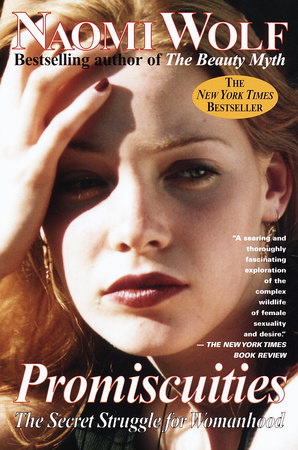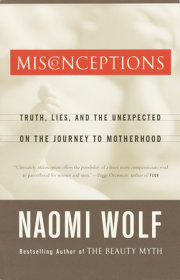From Chapter 3 of Promiscuities by Naomi Wolf
As we prepared for adolescence, our marching orders were contradictory, for some of the rules of the game we inherited came to us intact from the days of the dinner dance and had not been abandoned with the sexual revolution. Passivity was one rule. Girls that boys liked were not supposed to ask for a dance. You were not supposed to kiss first. And while you were waiting for a boy to put his arm around you, you were not supposed to move more than a fraction of an inch. If you precipitated contact in any way, you would be going "too far."
Those confounding rules were hard for active, curious girls to put into practice. The culturally imposed process of "whiting out" our child's erotic consciousness--what Mary McCarthy has called "drawing a blank"--this intentional not knowing that girls are asked to yield to at moments of sexual experience, involved us, necessarily, in the task of becoming mysterious to ourselves. We began to notice that songs about "becoming a woman" centered on the woman's vagueness and lack of reality. In these songs, men were sexually infatuated with women they did not know, women who had no outlines and no characteristics. One song--"Knock Three Times"--told the story of the sexual obsession of a man with his anonymous downstairs neighbor: "I can feel your body swayin' one floor below me, you don't even know me, I love you." The same scene was played out in the Temptations song "Just My Imagination": "But in reality she doesn't even know me!" "She takes just like a woman. She makes love just like a woman. And she
aches just like a woman. But she breaks just like a little girl," crooned Bob Dylan. What did that mean? What was happening to her each of those times? How would we recognize it? "I love you," a truck driver yelled out one day at a red light as my mother held my hand on Haight Street, and she smiled in spite of herself. Love you? He doesn't know you! I thought indignantly.
We would speculate with one another in maddening conversations as we played in Dodie's basement. Our Mystery Date board game began to supplant our Barbies. What did it mean to "make love just like a woman"? How could we know? Clearly, it would not be enough just to grow up. There was something else involved. How would we learn? What if we didn't manage to "make love just like a woman"? What god-awful thing would we then be?
"Lay, lady, lay, lay across my big brass bed, ..." Dylan sang too. "Stay with your man awhile, until the break of day, let me see you make him smile. His clothes are dirty but his hands are clean ..." Was a woman different from a lady? Better? Worse? Did it depend on the situation? What was she doing to him to make him smile? How could we learn that? Was there no deal in which he would make her smile? Why not? Sex, we understood by eleven, did not work symmetrically. "Her clothes are dirty but her hands are clean"--we already knew we would never hear that kind of line in a seduction song.
The woman's sexiness, when it wasn't a mystery, was often a thing or a single attribute: "She wore ... an itsy-bitsy teenie weenie yellow polka-dot bikini" ... "Every kind of girl there was, long ones, tall ones, short ones, brown ones ... Spill the wine. Dig that girl." The message was that we had to be wanted in order to be allowed to want. We had to be mostly out of focus, except for a bikini or a hair color, to be sexy. It was not just a biological mystery that was enfolding us; it was cultural.
Carol Gilligan and Lyn Mikel Brown, in their classic Meeting at the Crossroads, eloquently described the way in which girls go from being distinct personalities at ten to amorphous, uncertain creatures at thirteen. An analogous process, I am convinced, takes place in relation to girls' loss of the "voice" of their own desire. The culture that surrounds girls signals to them that they must, sexually, forget themselves. They must become passive in relation to the energy of desire, or detached from owning it, even in the face of its increasingly active pressure.
This situation--the mystification that intervenes between girlhood and womanhood--reminds me of a scene in Lewis Carroll's Through the Looking Glass. Alice finds herself wandering in a beautiful, dark forest. She is joined by a young deer, which accompanies her in perfect amiability. The two share the journey with a sense of deep familiarity. But when they emerge from the wood, the fawn recognizes its companion for what she is: "I'm a Fawn ... And, dear me! You're a human child!" The creature bounds away in alarm, leaving young Alice alone.
Something like this happens to us at the threshold of adolescence. "What are you?" the girl asks of her own desire--once her companion, now wary of the light. And: "What am I?"
The girl must now pass into the unforgiving glare of social reality in which human and beast--consciousness and appetite--confront each other in a state of estrangement before the relearning begins. The girl's consciousness and the animal aspect of her nature must assume names that insist they are separate beings ("And, dear me! you're a human child!")--rather than names that allow them to remain parts of each other. The girl, denatured, becomes a mystery to herself.
. All rights reserved. No part of this excerpt may be reproduced or reprinted without permission in writing from the publisher.










